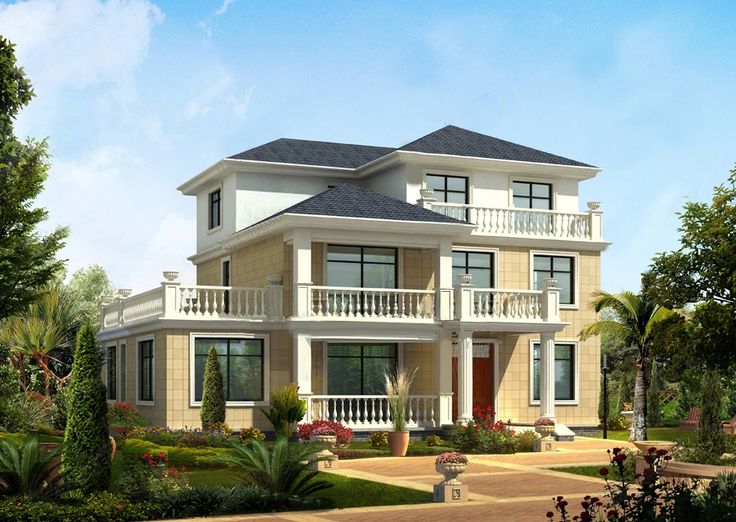How is the thermal insulation performance of light steel villas?
2024-07-18 22:41
Light steel villas, as a new form of modern architecture, have gained popularity due to their lightweight, seismic resistance, and rapid construction. Among their many advantages, thermal insulation performance is a crucial factor affecting living comfort and energy efficiency. This article will explore the thermal insulation performance of light steel villas, covering aspects such as material characteristics, design principles, and construction techniques.

1. Structural Characteristics of Light Steel Villas
Light steel villas utilize lightweight steel as the primary structure, typically composed of a light steel frame, walls, roofs, and foundations. Due to their lightweight structure, these villas can effectively reduce the building's weight, enhancing seismic resistance. Additionally, the flexible design of light steel structures allows for customized solutions to meet various user needs.
2. Selection of Insulation Materials
The thermal insulation performance of light steel villas primarily depends on the insulation materials used. Common insulation materials include:
2.1 Expanded Polystyrene Foam (EPS)
EPS is a widely used insulation material known for its good thermal insulation properties and low water absorption. Its thermal conductivity typically ranges from 0.035 to 0.045 W/(m·K), effectively preventing heat transfer.
2.2 Polyurethane Foam (PU)
Polyurethane foam exhibits excellent insulation performance, with a thermal conductivity ranging from 0.020 to 0.025 W/(m·K). Its superior insulation capabilities help keep the interior warm in winter while effectively blocking external heat in summer.
2.3 Rock Wool and Glass Wool
These two materials are also commonly used for insulation in light steel villas, offering excellent thermal insulation and fire resistance. Their thermal conductivity typically ranges from 0.030 to 0.040 W/(m·K) and also provide good soundproofing.
3. Principles of Insulation Design
In the design of light steel villas, the effectiveness of thermal insulation depends not only on the insulation materials but also on the overall structural design. Key design principles include:
3.1 Composite Wall Design
Light steel villas often utilize composite wall designs, where different materials are used for the inner and outer layers to enhance insulation performance. For example, the outer layer might use polystyrene boards or rock wool, while the inner layer could consist of gypsum boards or other finish materials, improving both insulation and structural stability.
3.2 Designing for Airtightness
Good airtightness is crucial for enhancing insulation performance. During construction, it is essential to ensure that gaps in walls, roofs, and windows are properly sealed to prevent heat loss through air leaks. Common practices include using sealants and foam filling materials to maintain the overall airtightness of the building.
3.3 Roof Insulation Design
The roof is one of the primary areas for heat loss, making insulation measures critical in the design of light steel villas. A common approach is to implement a double-layer roof design, filling the interior with insulation materials and using reflective membranes to reduce solar radiation heat.
4. Impact of Construction Techniques
The quality of construction directly affects the thermal insulation performance of light steel villas. Attention should be paid to the following aspects during construction:
4.1 Accurate Cutting and Installation
Insulation materials must be cut accurately to ensure a snug fit against the light steel frame, avoiding gaps. Additionally, it is important to maintain the integrity of the insulation layer during installation to prevent thermal bridging.
4.2 Appropriate Fixing Methods
Selecting suitable fixing methods during the installation of insulation materials is vital. Using specialized fasteners not only enhances the stability of the insulation but also reduces heat transfer.
4.3 Post-Construction Inspection and Maintenance
After construction, rigorous quality checks should be performed to ensure the correct installation of insulation materials and effective sealing. Regular inspections of the exterior of the light steel villa should be conducted to identify and repair potential water leaks and damage, maintaining optimal insulation performance.
5. Comprehensive Evaluation and Conclusion
The thermal insulation performance of light steel villas is influenced by multiple factors, including the choice of insulation materials, design principles, and construction techniques. By selecting high-quality insulation materials, designing composite walls, enhancing airtightness, and employing precise construction methods, the thermal insulation effectiveness of light steel villas can be significantly improved.
In modern architecture, light steel villas are increasingly favored for their excellent insulation properties, economic efficiency, and environmental benefits. With ongoing technological advancements and material innovations, the thermal insulation performance of light steel villas will continue to improve, providing a more comfortable living environment. Understanding the thermal insulation characteristics when choosing a light steel villa is crucial for ensuring family comfort and energy efficiency.



